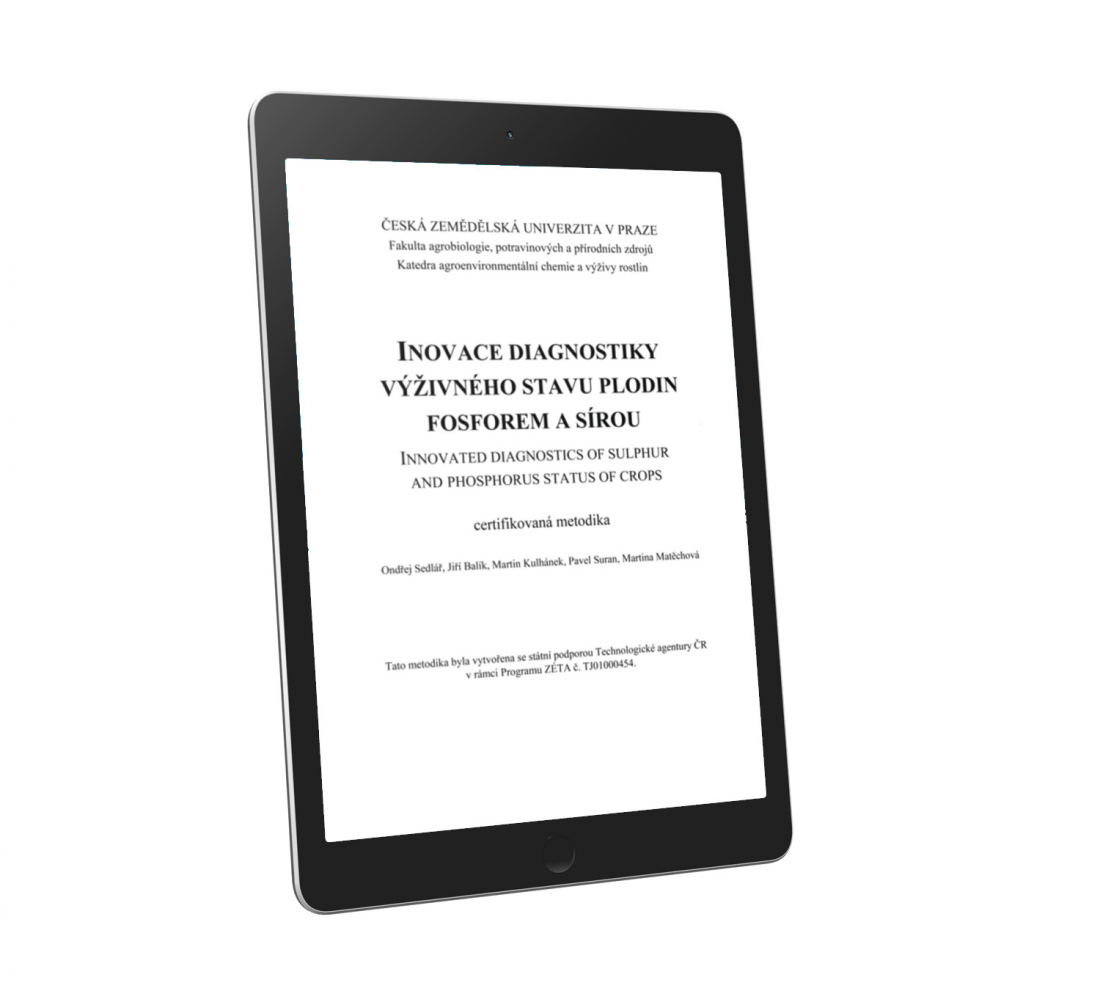Research activities:
Plant nutrition focused on nitrogen, phosphorus and sulphur - nutrition uptake, plant nutritional status, soil available forms, reduction of abiotic stressors by fertilization.
Teaching activities:
Plant nutrition, fertilization, fertilizers, soil fertility, analytical methods.
Language skills:
english, deutsch
Follow me on ResearchGate.net
ResearcherID: U-7499-2019
ORCID ID: https://orcid.org/0000-0002-3400-6326
Scopus ID: 54417951500

Sedlar O., Balik J., Kulhanek M., Suran P., Matechova M. 2020. Innovated Diagnostics of Sulphur and Phosphorus Status of Crops. Certified methodology. Czech University of Life Sciences Prague, 38 p., ISBN 978-80-213-3033-7
Download (in Czech): Inovace_diagnostiky_vyziv_stavu_P_S.pdf
Summary and Recommendations
The aim of this publication is finding of simple indicator of sulphur/ phosphorus status of plants which is in significant relation to (i) bioavailable sulphur/phosphorus in soil and (ii) yield as well as its quality. Due to bonding of both sulphur and phosphorus with soil organic matter, only soils containing defined amount of organic carbon were evaluated in our research: 0.5 – 2.2 % of Cox when phosphorus uptake was studied and 0.5 – 1.7 % of Cox when sulphur uptake by plants was monitored. Only plants with the optimal nitrogen content in shoot biomass were included in the research.
Mass ratio of nitrogen content to both sulphur (N:S) and phosphorus (N:P) contents in shoot biomass of winter wheat and winter rape correlated the strongest with bioavailable sulphur/phosphorus in soil determined using the Mehlich 3 extractant (except for winter rape grown on noncalcareous soils). Both the N:S and the N:P ratios in shoot biomass of winter wheat and winter rape correlated the strongest with yield and its qualitative parameters. The optimal values of the N:S ratio in shoot biomass were: ca. 12 for winter wheat from the beginning of stem elongation (BBCH 30) to the beginning of heading (BBCH 51) and ca. 9 for winter rape at the beginning of flowering (BBCH 60). The optimal values of the N:P ratio in shoot biomass were: ca. 12 for winter wheat at the beginning of stem elongation and ca. 10 at the beginning of heading and ca. 7 for winter rape at the beginning of flowering.
The optimal sulphur/phosphorus status of both winter wheat and winter rape was recorded also in soils reaching contents of available sulphur/phosphorus lower than the “good” content. However, the “good” content of soil sulphur in both water and Mehlich 3 solutions is necessary to keep for optimal sulphur status of winter rape.
The mass P:Zn ratio in soil determined using the Mehlich 3 extractant exceeding 23.0 and 48.0 in calcareous and noncalcareous soils, respectively, led to significant decrease in P:Zn ratio in wheat shoot biomass during flowering stage.
Based on our results, using of anion exchange membranes for determination of bioavailable sulphur in soil cannot be recommended.





 +420 22438 2743
+420 22438 2743


